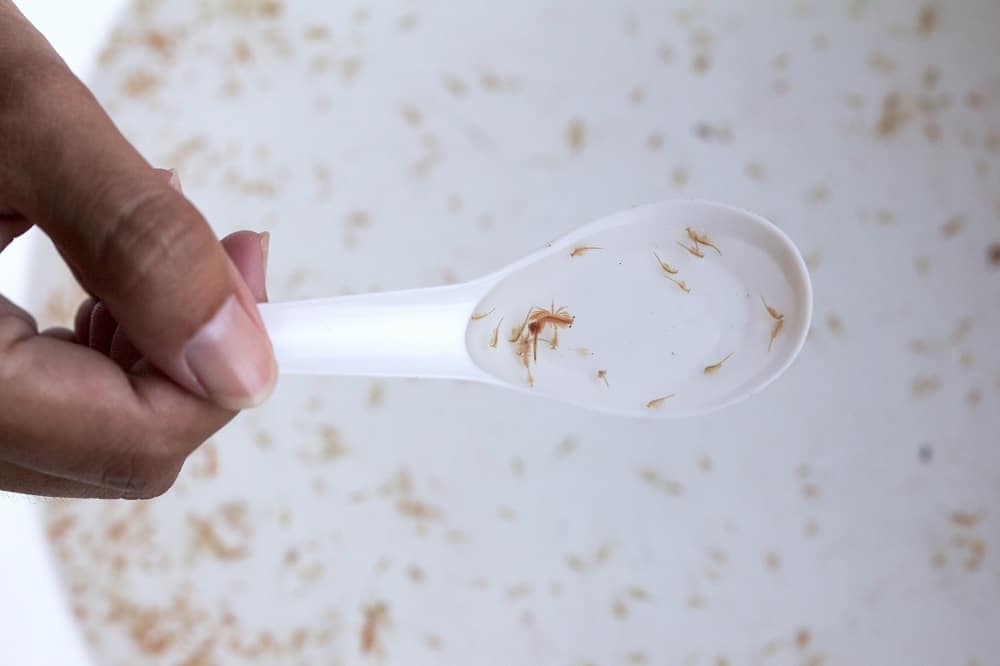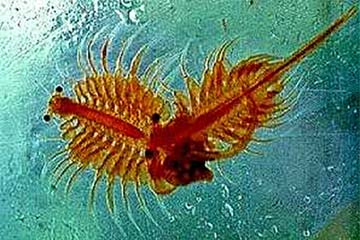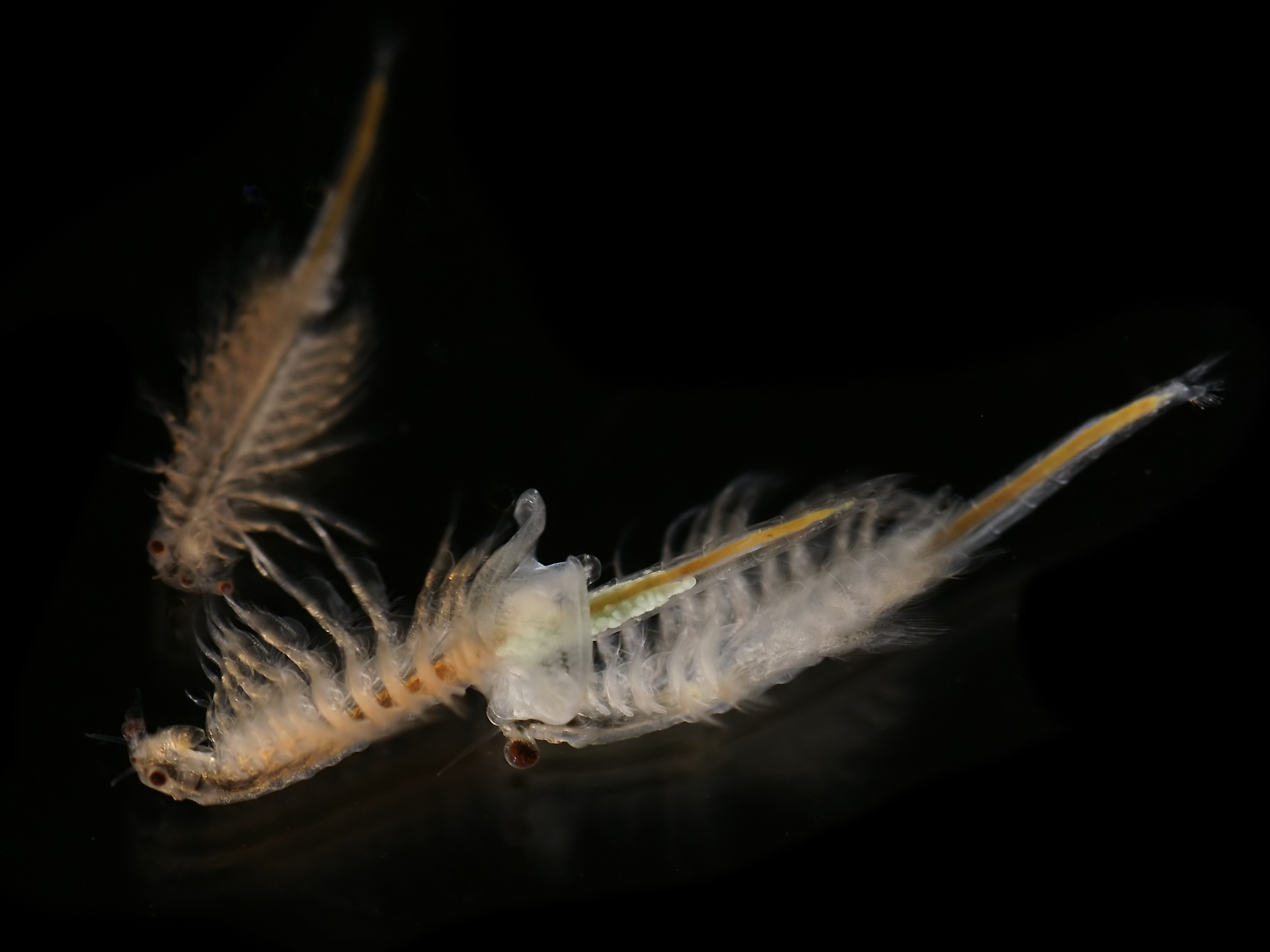Why do brine shrimp need salt
Why Do Brine Shrimp Need Salt. Fresh water probably causes such extreme osmotic pressure on the eggs they burst and even if salt was added later. Brine shrimp are able to control how much salt they let into their body tissues better than any other organism in the world thanks mostly to the skin lining of the stomach and the gills. They are tough and can handle very different amounts of salt. Of course the food needs to be good too.
 Growing Brine Shrimp For Tropical Fish Food Fishkeeping Advice From fishkeepingadvice.com
Growing Brine Shrimp For Tropical Fish Food Fishkeeping Advice From fishkeepingadvice.com
Because brine means salt water that is their natural habitat. Physiologically optimal levels of salinity are about 30 35 but due to predators at these salt levels brine shrimp seldom occur in natural habitats at salinities of less than 60 80. Brine shrimp use their bodies to move tiny microscopic organisms into their mouths. Brine shrimp are tiny invertebrates arthropod crustaceans really from the genus artemia that naturally grow in salt lakes. Brine shrimp have evolved a density mechanism so that cysts place themselves in the most advantageous salinity concentration. Cysts sink in water that is 0 8 saline which may be advantageous because salinity increases with depth this is seen in the mono lake ca population as the salinity of that lake falls in this range.
Brine shrimp use their bodies to move tiny microscopic organisms into their mouths.
Brine shrimp can tolerate any levels of salinity from 25 to 250 25 250 g l with an optimal range of 60 100 and occupy the ecological niche that can protect them from predators. The outer layer of the shrimp is impermeable to water so the only way for salt water to enter is through the mouth during feeding. Brine shrimp have evolved a density mechanism so that cysts place themselves in the most advantageous salinity concentration. The brine shrimp is efficiently adapted for life in a habitat of a wide range of salt concentration. Brine shrimp use their bodies to move tiny microscopic organisms into their mouths. What are brine shrimp.
 Source: wildlife.utah.gov
Source: wildlife.utah.gov
The brine shrimp is efficiently adapted for life in a habitat of a wide range of salt concentration. The brine shrimp is efficiently adapted for life in a habitat of a wide range of salt concentration. Brine shrimp are fish food that will drive your reef fish crazy. Fresh water probably causes such extreme osmotic pressure on the eggs they burst and even if salt was added later. They are tough and can handle very different amounts of salt.
 Source: fishkeepingadvice.com
Source: fishkeepingadvice.com
Cysts sink in water that is 0 8 saline which may be advantageous because salinity increases with depth this is seen in the mono lake ca population as the salinity of that lake falls in this range. The non scientific short answer. Brine shrimp have evolved a density mechanism so that cysts place themselves in the most advantageous salinity concentration. They are tough and can handle very different amounts of salt. Brine shrimp are fish food that will drive your reef fish crazy.
 Source: sciencenetlinks.com
Source: sciencenetlinks.com
The non scientific short answer. Cysts sink in water that is 0 8 saline which may be advantageous because salinity increases with depth this is seen in the mono lake ca population as the salinity of that lake falls in this range. The brine shrimp is efficiently adapted for life in a habitat of a wide range of salt concentration. Fresh water probably causes such extreme osmotic pressure on the eggs they burst and even if salt was added later. Their gills aid them to deal with high salt content by absorbing and excreting ions when necessary.
 Source: aquariumbreeder.com
Source: aquariumbreeder.com
Because brine means salt water that is their natural habitat. Salinity is usually measured in parts per thousand ppt which means the number of grams of salt in a kilogram of liquid. Physiologically optimal levels of salinity are about 30 35 but due to predators at these salt levels brine shrimp seldom occur in natural habitats at salinities of less than 60 80. Brine shrimp use their bodies to move tiny microscopic organisms into their mouths. The more specific answer.
 Source: en.wikipedia.org
Source: en.wikipedia.org
The brine shrimp is efficiently adapted for life in a habitat of a wide range of salt concentration. Brine shrimp also need saltwater. Because brine means salt water that is their natural habitat. The more specific answer. Brine shrimp are tiny invertebrates arthropod crustaceans really from the genus artemia that naturally grow in salt lakes.
 Source: wildlife.utah.gov
Source: wildlife.utah.gov
They are tough and can handle very different amounts of salt. Brine shrimp use their bodies to move tiny microscopic organisms into their mouths. The outer layer of the shrimp is impermeable to water so the only way for salt water to enter is through the mouth during feeding. Brine shrimp also need saltwater. What are brine shrimp.
 Source: aquariadise.com
Source: aquariadise.com
The non scientific short answer. Salinity is usually measured in parts per thousand ppt which means the number of grams of salt in a kilogram of liquid. The outer layer of the shrimp is impermeable to water so the only way for salt water to enter is through the mouth during feeding. They are tough and can handle very different amounts of salt. Because brine means salt water that is their natural habitat.
 Source: hunterhunts.com
Source: hunterhunts.com
Cysts sink in water that is 0 8 saline which may be advantageous because salinity increases with depth this is seen in the mono lake ca population as the salinity of that lake falls in this range. The more specific answer. Brine shrimp can tolerate any levels of salinity from 25 to 250 25 250 g l with an optimal range of 60 100 and occupy the ecological niche that can protect them from predators. Brine shrimp use their bodies to move tiny microscopic organisms into their mouths. Brine shrimp also need saltwater.
 Source: education.com
Source: education.com
The brine shrimp is efficiently adapted for life in a habitat of a wide range of salt concentration. Brine shrimp are fish food that will drive your reef fish crazy. Brine shrimp use their bodies to move tiny microscopic organisms into their mouths. The non scientific short answer. Physiologically optimal levels of salinity are about 30 35 but due to predators at these salt levels brine shrimp seldom occur in natural habitats at salinities of less than 60 80.
 Source: hollywoodfishfarm.co.nz
Source: hollywoodfishfarm.co.nz
The brine shrimp is efficiently adapted for life in a habitat of a wide range of salt concentration. The more specific answer. The brine shrimp is efficiently adapted for life in a habitat of a wide range of salt concentration. Fresh water probably causes such extreme osmotic pressure on the eggs they burst and even if salt was added later. Brine shrimp can tolerate any levels of salinity from 25 to 250 25 250 g l with an optimal range of 60 100 and occupy the ecological niche that can protect them from predators.
 Source: fishkeepingadvice.com
Source: fishkeepingadvice.com
Brine shrimp are tiny invertebrates arthropod crustaceans really from the genus artemia that naturally grow in salt lakes. Brine shrimp have evolved a density mechanism so that cysts place themselves in the most advantageous salinity concentration. The outer layer of the shrimp is impermeable to water so the only way for salt water to enter is through the mouth during feeding. Brine shrimp use their bodies to move tiny microscopic organisms into their mouths. Their gills aid them to deal with high salt content by absorbing and excreting ions when necessary.
Source: sciencefriday.com
Their gills aid them to deal with high salt content by absorbing and excreting ions when necessary. The more specific answer. What are brine shrimp. The outer layer of the shrimp is impermeable to water so the only way for salt water to enter is through the mouth during feeding. Brine shrimp are fish food that will drive your reef fish crazy.
 Source: brineshrimpdirect.com
Source: brineshrimpdirect.com
Salinity is usually measured in parts per thousand ppt which means the number of grams of salt in a kilogram of liquid. Their gills aid them to deal with high salt content by absorbing and excreting ions when necessary. Brine shrimp have evolved a density mechanism so that cysts place themselves in the most advantageous salinity concentration. What are brine shrimp. Brine shrimp are fish food that will drive your reef fish crazy.
 Source: tfhmagazine.com
Source: tfhmagazine.com
Brine shrimp are tiny invertebrates arthropod crustaceans really from the genus artemia that naturally grow in salt lakes. The outer layer of the shrimp is impermeable to water so the only way for salt water to enter is through the mouth during feeding. Their gills aid them to deal with high salt content by absorbing and excreting ions when necessary. Brine shrimp are fish food that will drive your reef fish crazy. Brine shrimp are able to control how much salt they let into their body tissues better than any other organism in the world thanks mostly to the skin lining of the stomach and the gills.
 Source: aquariumbreeder.com
Source: aquariumbreeder.com
Salinity is usually measured in parts per thousand ppt which means the number of grams of salt in a kilogram of liquid. Their gills aid them to deal with high salt content by absorbing and excreting ions when necessary. The outer layer of the shrimp is impermeable to water so the only way for salt water to enter is through the mouth during feeding. Brine shrimp are able to control how much salt they let into their body tissues better than any other organism in the world thanks mostly to the skin lining of the stomach and the gills. Because brine means salt water that is their natural habitat.
If you find this site helpful, please support us by sharing this posts to your favorite social media accounts like Facebook, Instagram and so on or you can also save this blog page with the title why do brine shrimp need salt by using Ctrl + D for devices a laptop with a Windows operating system or Command + D for laptops with an Apple operating system. If you use a smartphone, you can also use the drawer menu of the browser you are using. Whether it’s a Windows, Mac, iOS or Android operating system, you will still be able to bookmark this website.






